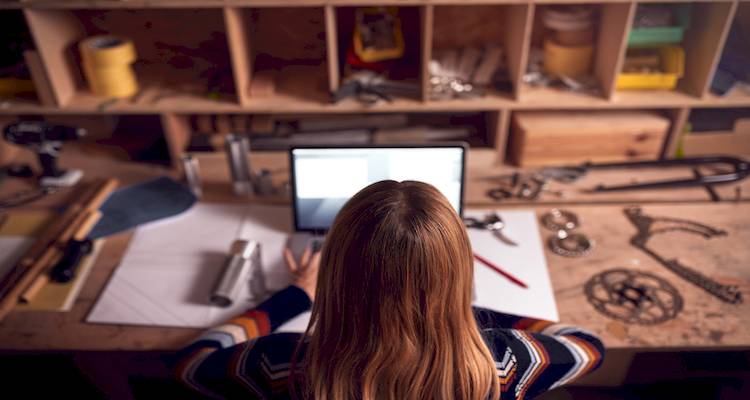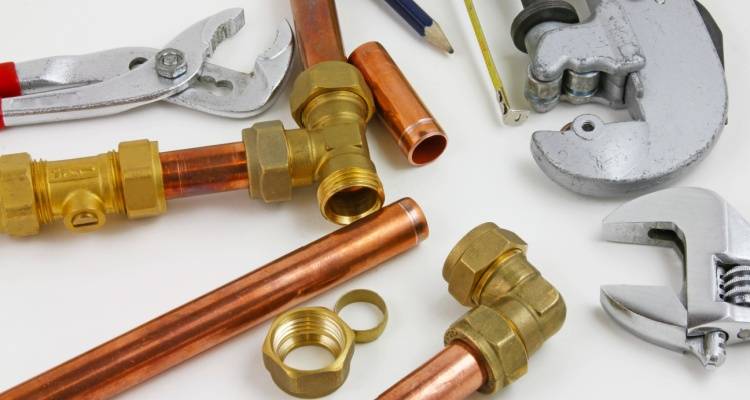Painter and Decorator Insurance
For painters and decorators, transforming spaces is their craft. However, their work can come with some risks. These professionals work in various locations, including homes and businesses. These settings can expose the professionals to a range of potential hazards.
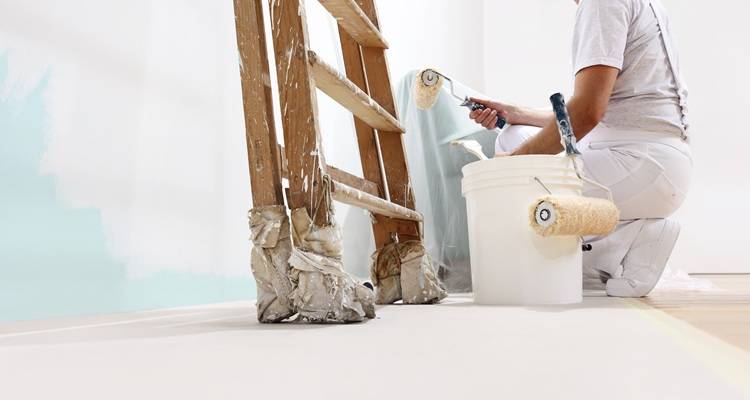
Accidental damage to a client's possessions, slips and falls that could lead to injuries for the clients or members of the public and tool theft are just some of the challenges that these professionals face daily. Without adequate protection, these incidents can lead to significant financial burdens and could even cost them their business.
In this article, we will look at the different types of painter and decorator insurances, along with the costs involved, and how to choose the right type of insurance.
Read on to find out everything you need to know about painter and decorator insurance…
Table of Contents
What is Painter and Decorator Insurance?
In the UK, while there isn't a set legal requirement for all painters and decorators to hold insurance, particularly for those who are self-employed, certain types of coverage are strongly recommended. Public liability insurance is an example that is not legally mandated for sole traders.
However, it is crucial for protecting against claims that may involve injuries or property damage caused to the client or members of the public. Tool insurance may also seem optional to these professionals. However, the loss of their expensive equipment can very negatively impact their ability to work. This could result in a significant loss of income.

While some insurance types might be considered optional, the reality is that having the right type of coverage is essential for peace of mind and for the longevity of your business.
Insurance can prevent costly legal battles, safeguard you against big financial losses, and protect the reputation of your business. Insurance can provide a great safety net and allow painters and decorators to focus on their work with confidence and peace of mind.
Types of Insurance for Painters and Decorators
Below is a list of the different types of insurance for painters and decorators, along with some information on each type:
Public Liability Insurance
Public liability insurance is one of the most important types of insurances for painters and decorators. This type of insurance provides a safety net against claims made by clients or members of the public who suffer from injuries or property damage as a direct result of the painter or decorator’s work.

Some examples may include spilt paint on furniture, a trailing cable that leads to a trip hazard, or an accidental breakage of something valuable – these are just a few examples of scenarios that could happen on the job and are all examples of incidents where public liability insurance would come into play.
Public liability insurance covers the legal costs and compensation payouts associated with these types of claims. This can protect the painter or decorator from some potentially devastating repercussions. Without the right type of coverage, a single accident could lead to significant legal battles and very big expenses or losses. This could then jeopardise the whole financial stability of the business.
Employer’s Liability Insurance
If a painter or decorator hires anyone to work for them, even if it is just on a part-time or temporary basis, Employer's Liability Insurance is a legal necessity in the UK.
This important coverage addresses compensation claims from employees who suffer injuries or illnesses as a direct result of something at work. There are several potential hazards that could occur during painting and decorating, including the following:
- Falls from a height – Scaffolding, ladders, and other work platforms at height pose a significant risk of falls, which could lead to serious injuries.
- Exposure to harmful substances – Inhaling paint fumes, dust, or other chemicals can cause some respiratory problems or maybe other health problems.
- Injuries from tools and equipment – Accidents involving power tools, brushes, and other equipment are also a possibility.
Employer’s Liability Insurance safeguards the business against the financial burdens of these claims. The insurance will cover legal costs and compensation payouts. Failure to hold this insurance when required can result in substantial fines. So, Employer’s Liability Insurance is an essential component of a responsible painter and decorator’s business.
Professional Indemnity Insurance
For painters and decorators who offer more than just simple applications, offering advice, consultations or design expertise, Professional Indemnity Insurance is a very valuable asset. This type of coverage protects the professional against claims arising from allegations that poor workmanship, incorrect advice, or design flaws have resulted in some kind of financial loss for the client.
For example, the client may claim that the decorator's recommendation of a particular type of paint has led to premature peeling, and this has resulted in some costly remedial work. Another example is if a colour consultation has resulted in a finish that the client is not happy with, resulting in them paying out additional money for a redecoration. In these types of cases, a claim could be made.
Professional Indemnity Insurance covers the legal costs and compensation payouts associated with these types of claims. This protects the painter or decorator from any financial repercussions of these professional errors or omissions. This type of insurance is particularly helpful for people who provide design input, colour matching, or project management services.
Tools and Equipment Insurance
For self-employed painters and decorators, their tools and equipment are essential for their business, so it's important to protect them. Whether it is brushes, rollers, power tools or ladders, all of these items represent a significant investment in the business. Tools and Equipment Insurance provides crucial financial protection against the costs of replacing these important items in the event of loss, theft, or damage.
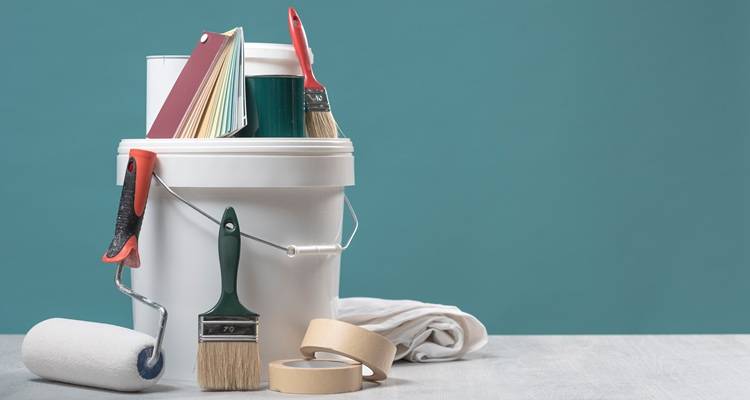
Many decorators work in different places a lot and will often leave their tools in a van or at the client’s property, so the risk of theft is a real concern. Similarly, accidental damage or loss due to water, fire, or other types of unforeseen circumstances can occur.
This type of insurance ensures that decorators can quickly replace their equipment, and this can minimise downtime and lost income. Without it, the downtime of replacing expensive tools could be substantial and could even result in the complete loss of the business. So, with this in mind, Tool and Equipment Insurance is very important for any painter or decorator who relies on their equipment to earn a living.
Personal Accident Insurance
Painting and decorating can be very physically demanding, and the work comes with several risks. A slip, fall or injury could leave the professional unable to work for several days, weeks, or even months in some cases. Personal Accident Insurance provides an important safety net for these cases.
This type of insurance provides financial support if the professional is unable to work due to an injury that has happened on the job. This support is important for covering lost income, allowing the professional to continue to meet their financial obligations while they are in recovery.
Also, this type of insurance can offer some help with medical expenses if that is needed. For self-employed decorators, this type of insurance can be very valuable. It can help to ensure that any absences due to injuries do not lead to financial hardships. This then allows them to focus on their recovery without the stress of losing any earnings.
Van/Vehicle Insurance
For painters and decorators who rely on a van or car for their work, personal vehicle insurance is unlikely to provide the right type of coverage. When using a vehicle for business, such as transporting tools, equipment and materials between job sites, the professional will need commercial vehicle insurance.

This specialised type of coverage acknowledges the increased risks associated with business use, including the transportation of equipment, higher mileage, and frequent stops in various locations.
This type of vehicle insurance usually covers the following:
- Third-party liability – This covers damage or injury caused to other people or property in an accident.
- Damage to the vehicle – It covers damage to the vehicle itself from things like accidents, theft, or vandalism.
- Carriage of tools and equipment – Some policies offer specific coverage for tools and equipment that are stored in the vehicle.
- Business use – This ensures the policy covers the vehicle’s use for work-related activities, which personal policies do not.
- Goods in transit – If you are transporting materials for jobs, this can be a very useful addition.
How Much Does Painter and Decorator Insurance Cost?
The cost of decorator and painter insurance can vary significantly depending on several different factors. It is important to understand these factors and how they can influence premiums so that you can make an informed decision on the types of coverage that you need.
Below is a list of things that can factor into the insurance costs:
- Level of Cover – Higher coverage limits, such as increased public liability coverage, result in higher premiums.
- Number of Employees – Businesses with more employees will face higher insurance costs.
- Claims History – If you have a history of frequent claims, this indicates a higher risk and can lead to increased premiums.
- Business Size and Project Volume – Larger businesses with more projects will need more comprehensive and costly coverage.
- Location – Jobs in cities may have higher risks than rural jobs, and this could affect the costs.
- Type of Work – Specialist decorating that may involve hazardous materials can lead to increased costs.
Below is a table showing the general price ranges for painter and decorator insurance policies. It is important to note that these are estimates, and the actual costs can vary greatly.
| TYPE OF INSURANCE | ESTIMATED ANNUAL COST |
|---|---|
| Public Liability Insurance | £80 - £450 |
| Employer’s Liability Insurance | £180 - £1000 |
| Professional Indemnity Insurance | £150 - £750 |
| Tools and Equipment Insurance | £100 - £400 |
| Personal Accident Insurance | £100 - £500 |
| Van/Commercial Vehicle Insurance | £500 - £1500 |
Tips for Reducing the Costs
Below is a list of tips on how you could reduce the costs of painter and decorator insurance:
- Increase the Excess – Choosing a higher excess can lower your premiums. However, you need to ensure you can afford to pay the excess if a claim does come up.
- Bundle Policies – Many insurers can offer discounts for bundling multiple policies, such as public liability insurance and tools insurance, with the same provider.
- Maintain a Clean Claims Record – Avoiding claims by having safe working habits and taking extra precautions can keep premiums low.
- Shop Around and Compare Quotes – Get quotes from multiple insurers to find the best coverage at the most competitive price.
- Accurate Information – Providing accurate information when applying for insurance can prevent issues with claims and ensure that you are not paying for any unnecessary coverage.
- Review Your Policy Regularly – As your business grows and changes, so will your insurance needs. Make sure you review your policy annually to ensure you have the correct coverage and that you are not paying for unneeded coverage.
Choosing the Right Insurance Policy
Choosing the right type of insurance policy is very important for painters and decorators to safeguard their business and their livelihood. It is not just about choosing the cheapest insurance option – it is more important to secure comprehensive coverage that fits your specific needs.

Here is a breakdown of some key factors that you should consider when choosing the right insurance policy for you:
- Coverage Limits – Assess the level of coverage with each type of insurance. Make sure that the limits are sufficient enough to cover any potential claims without leaving you financially vulnerable. For example, you should consider the value of the properties you work in when setting up public liability coverage.
- Exclusions – Be sure to carefully review the exclusions in the policy. These are any situations or events that are not covered by the insurance. Understanding the exclusions is important so that you can avoid any gaps in the coverage.
- Policy Wording and Small Print – Make sure you read the policy documents properly and thoroughly and pay close attention to the small print. This will help you understand the terms and conditions properly and ensure that you are aware of any limitations or restrictions.
- The Provider’s Reputation and Customer Reviews – Do some research into the insurer's reputation and read some reviews from previous customers. This will provide you with some insights into their claims handling process, customer service, and claims-handling.
- Specific Needs – Consider the unique aspects of your business, such as the type of work that you do, the equipment you use, and the number of employees that you have. Make sure to tailor the policy so that it meets your specific needs.
- Excess – You need to be sure that you know how much you will have to pay if you make a claim.
Below is a list of ways in which you can compare insurance quotes effectively:
- Use Online Comparison Tools – Make use of online comparison websites to obtain quotes from multiple insurance providers quickly. However, remember that these tools may not always provide the right coverage to cater to your specific needs, so make sure you know what you are looking for before using any of these sites.
- Specialist Insurance Brokers - Consider speaking to some specialist insurance brokers who will understand the ins and outs of the painting and decorating industry. These insurers can provide tailored advice and help you find the most suitable coverage for your needs. They can also explain the small print in a more easy-to-understand way.
- Direct Contact with Insurers – Contact the insurers directly to get quotes from them and discuss your specific needs. This is particularly important and beneficial if you need more complex or specialised coverage.
- Compare Like-for-Like – When you compare the quotes, make sure you are comparing policies with similar coverage limits, features, and exclusions. Don't just focus on the price. You need to consider the overall value and suitability of the policy as a whole.
- Ask Questions – Do not hesitate to ask questions about any aspect of the policy that you don’t understand. Clarification before the purchase is essential to avoid any surprises later.
Common Insurance Claims and How to Avoid Them
Painters and decorators face several different risks in their jobs that could lead to insurance claims. Below is a list of the most common insurance claims that these professionals may face, along with some of the best ways to avoid these and maintain a clean claims record.
Common Insurance Claims
- Accidental Spills – This is a common claim and often involves damage to carpets, furniture or artwork. An accidentally misplaced brush or an overturned paint can could result in costly repairs or replacements.
- Injuries from Ladders or Scaffolding – Falling from a height can lead to terrible injuries for clients or members of the public. Unstable ladders or improperly erected scaffolding are usually the most common reasons for this.
- Fire Hazards – Not properly handling or storing flammable materials such as solvents or thinners can create fire hazards. Faulty electrical equipment could also be a cause.
- Theft of Tools and Equipment – Tools and equipment are vulnerable to theft. This is particularly true for tools or equipment that is left in a vehicle or an unsecured worksite. This can result in significant financial losses or disruption to work.
- Damage to Client Property – This can range from damaged walls, broken windows, or damage caused by sanding or dust.
Tips for Reducing Insurance Claim Risks
- Use Protective Sheeting – Always use a high-quality type of protective sheeting to cover carpets, furniture, or other valuable items before starting any of the work.
- Secure Ladders and Scaffolding – Make sure ladders and scaffolding are stable and properly erected. Follow all of the relevant safety guidelines for working at heights.
- Handle Flammable Materials Safely – Make sure to store flammable materials in designated containers and away from any heat sources. Dispose of rags and other materials properly. Also, ensure good ventilation when using solvent-based products.
- Secure Tools and Equipment – Keep all tools and equipment locked in a secure place when not in use. Consider installing security features such as alarms or tracking devices.
- Follow Health and Safety Best Practices – Make sure you adhere to all of the relevant health and safety regulations and guidelines. Conduct regular risk assessments to identify and remove any potential hazards.
- Properly Maintain Equipment – Ensure all tools and electrical equipment are well-maintained and always in good working order. Well-maintained, these can help to prevent accidents.
- Communicate with Clients – Clear communication with your clients about any potential risks and safety precautions can help prevent any possible misunderstandings and could prevent accidents.
- Up-to-Date Risk Assessments – Make sure to regularly review and update risk assessments to reflect any changes in work practices or environments.
- Proper Waste Disposal – Ensure all waste products are disposed of properly and correctly and that no waste products are left on a client's property that could cause harm.
- Take Photos – Before beginning any work, take pictures of the area that you're working in. This way, if there is a dispute about any damage, you have photo evidence of the condition of the area before you start the work.
DIY vs. Professional Insurance Policies
If you are a homeowner doing a DIY decorating project, you may be wondering if you need any additional insurance. In most cases, the standard home insurance policy offers some level of protection.
Home insurance typically covers accidental damage to the property itself. So, for example, if you accidentally spill something on your carpet, the home insurance may cover the cost of cleaning or replacing the carpet. However, you will need to check your policy’s terms and conditions.
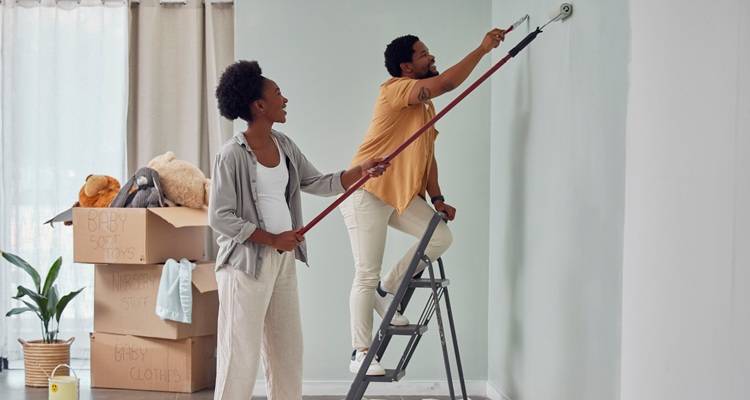
Public liability insurance is often included in home insurance. This may provide some additional protection if a guest is injured due to a DIY-related accident.
Some home insurance policies have limitations. They don't usually cover damage due to poor workmanship or faulty materials that are used in DIY projects. Also, if a homeowner hires a friend for assistance, their home insurance may not cover injuries sustained by that person.
Professional painters and decorators, on the other hand, require specialised insurance to protect themselves from the risks associated with their trade. Standard home insurance is simply not adequate for this purpose.

